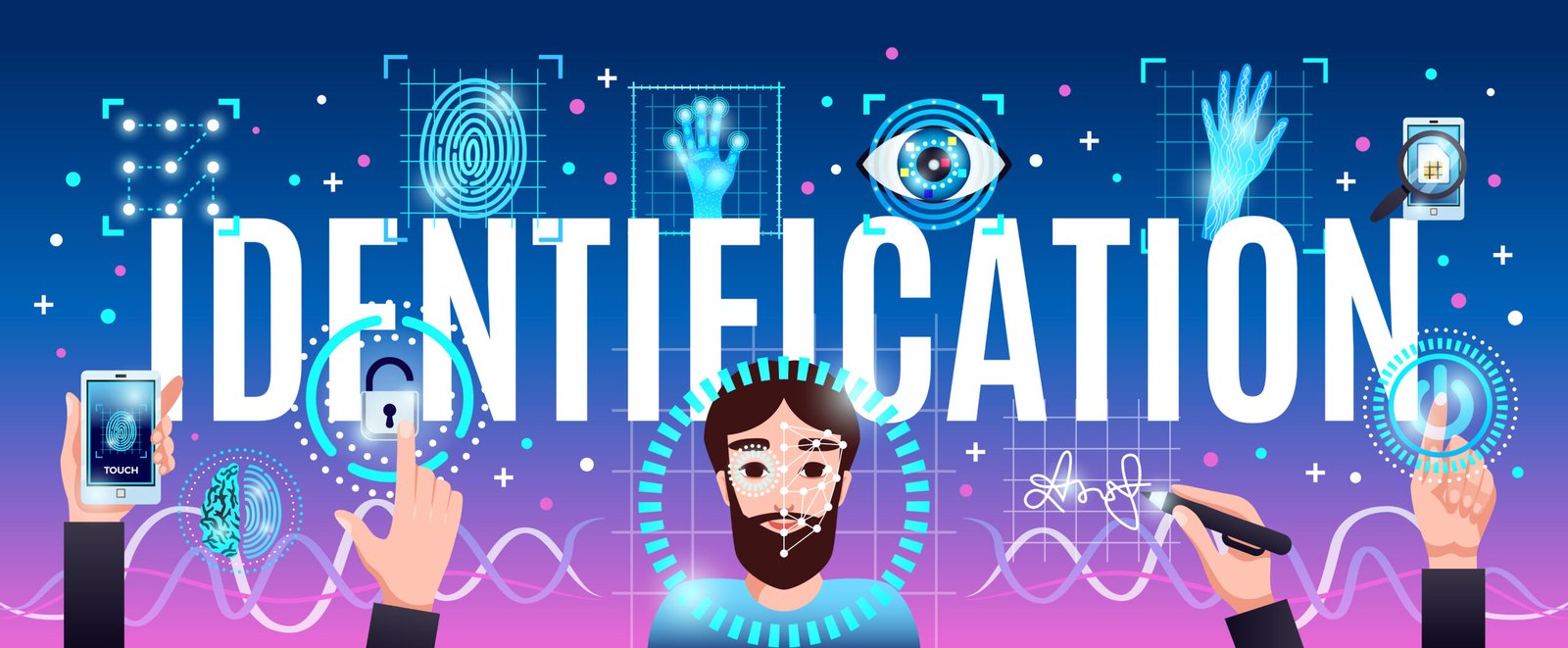Cybersecurity in the New Metaverse Protecting Digital Identities

INTRODUCTION
The Metaverse is transforming online interactions, working, and socialization at an incredibly rapid speed. With ever more immersive digital worlds, good security becomes indispensable. Metaverse Protecting Digital Identities is a growing problem since cyber attackers exploit vulnerabilities in the new virtual world. Here we will speak about the Metaverse cybersecurity problems, how to defend personal and company digital identities, and security in virtual worlds of the future.
Understanding the Metaverse and Digital Identity Threats
The Metaverse is a collective virtual world that integrates augmented reality (AR), virtual reality (VR), blockchain, and artificial intelligence (AI). Users create digital identities within this space to engage in social interactions, business transactions, and entertainment. With the integration of these technologies, there are a number of cybersecurity threats.

Major Digital Identity Threats in the Metaverse
Identity Theft and Impersonation – Hackers can hijack avatars and impersonate individuals.
Phishing in Virtual Worlds – Misleading VR shops and bogus links can lead to credential theft.
Malware and Ransomware Attacks – Malicious software can breach virtual experiences and steal data.
Data Privacy Concerns – Biometric data, behavior tracking, and interactions can be abused.
Unauthorized Virtual Asset Access – Hackers can tamper with smart contracts and NFTs.
Deepfake Technology Abuses – Avatars generated with AI can trick users and spread misinformation.
Social Engineering in VR – Manipulative tactics can trick users into divulging sensitive information.
Absence of Standardized Security Policies – The absence of worldwide policies means security goes unmanaged on any platform.
Man-in-the-Middle (MITM) Attacks – Intercepting data between users in virtual settings can lead to breaches.
Third-Party Application Vulnerabilities – Installed apps and plugins can create exploitable flaws.
To combat cybersecurity threats, users and businesses must adopt proactive security. Metaverse Securing Digital Identities requires the adoption of strong authentication, encryption, and behavioral observation.
1. Implement Multi-Factor Authentication (MFA)
Use biometric authentication, security tokens, and one-time passwords (OTPs).
Require additional verification levels for financial transactions and access.
2. Secure Digital Wallets and NFTs
Store assets in cold wallets (offline storage) instead of vulnerable hot wallets.
Employ decentralized identity (DID) solutions to securely manage ownership.
3. Privacy-Preserving Technologies
Employ end-to-end encryption (E2EE) to protect communication channels.
Employ zero-knowledge proofs to verify identities without compromising sensitive information.
4. AI-Powered Behavioral Analysis
Employ AI-driven anomaly detection to detect abnormal behavior in real time.
Employ predictive analytics to block fraudulent transactions and bot attacks.
5. Digital Identity Verification Frameworks
Employ blockchain-based identity verification for transparency and anti-fraud.
Utilize Self-Sovereign Identity (SSI) systems to enable users to have total autonomy over their digital presence.

6. Secure VR and AR Devices
Update firmware and software regularly to prevent vulnerabilities.
Disable unwanted tracking features that collect too much user data.
7. Metaverse User Cybersecurity Training
Conduct campaigns on phishing, scams, and impersonation threats.
Encourage ethical hacking practices to enhance security in virtual space.
8. Implement Zero Trust Security Models
Offer continuous authentication for every user.
Grant least privilege access to reduce insider threat risks.
9. Secure AI Algorithms in the Metaverse
Prevent AI models from being manipulated by adversarial attacks.
Use explainable AI (XAI) to increase transparency in automated decision-making.
10. Strengthen Cloud Security Controls
Encrypt cloud data and monitor unauthorized access.
Use AI-driven threat detection for real-time security notifications.
Regulations and Policies for Metaverse Security
Governments and tech companies are working to enact legislation that prioritizes Metaverse Protecting Digital Identities.
1. Data Protection Legislation
GDPR (General Data Protection Regulation) – Regulates data privacy in virtual spaces.
CCPA (California Consumer Privacy Act) – Protects user rights in digital spaces.
2. Decentralized Identity Standards
World Wide Web Consortium (W3C) DID Standards – Prescribes self-sovereign digital identity systems.
Metaverse Standards Forum – Establishes security protocols for virtual identity management.

The Metaverse Future of Cybersecurity
1. AI-Powered Identity Protection
Advanced AI algorithms will detect deepfake identities and prevent fraud.
AI-driven chatbots will verify identities in real-time.
2. Blockchain-Based Authentication Systems
Decentralized identity systems will enhance security and anonymity.
Smart contracts will lock in automated digital ownership transfers.
3. Quantum-Resistant Encryption
New cryptographic techniques will defend Metaverse identities from quantum attacks.
Post-quantum cryptography will be required for long-term security.
4. Regulation of Digital Assets
Governments will enforce tougher compliance rules on virtual transactions.
NFT security frameworks will protect against asset stealing and counterfeiting.
5. Ethical AI and Privacy-Driven Development
Ethics will guide the creation of Metaverse security protocols.
Privacy-centered Metaverse design will limit intrusive data gathering.
6. Cross-Platform Security Interoperability
Interoperable security schemes will enable security across different Metaverse platforms with ease.
Seamless integrated authentication frameworks will enhance user security.
7. Emergence of Decentralized Autonomous Organizations (DAOs) for Security
Community-based governance will enforce security controls in the open.
Smart contracts will automatically enforce cybersecurity regulations.
8. Personal AI Security Assistants
AI-driven security assistants will monitor and alert users to potential threats.
Personalized threat intelligence will improve protection against cyberattacks.
9. Virtual Crime Investigation Expansion
Law enforcement will establish dedicated cybercrime units for Metaverse security.
AI-driven forensic tools will analyze digital crime patterns.

10. Real-Time Biometric Authentication for VR and AR
Real-time biometric identity verification in real-time continuously will prevent unauthorized access.
Dynamic authentication methods will enhance real-time security.
Conclusion
Metaverse Securing Digital Identities is leading the charge in ensuring the protection of our future virtual world. As more immersive virtual experiences become reality, cybersecurity measures must be architected to defend against emerging threats. Users, organizations, and regulators must work together and implement robust authentication protocols, security architecture with artificial intelligence, and blockchain identity solutions in order to construct a secure, safe, and trusted Metaverse.
With the onset of best practices and new cybersecurity technologies, we can safeguard virtual economies and digital identities from cyber attacks. With the growth of the Metaverse, prudence and caution are the new norms for a secure online world.
Disclaimer
The content on this blog, Cybersecurity in the New Metaverse: Protecting Digital Identities, is informational and educational only. We do our best to give timely, current, and accurate information on Metaverse Protecting Digital Identities and cybersecurity trends here, but information here is neither professional advice nor legal advice nor investment advice.
Cybersecurity is a constantly changing field, and the threats of the Metaverse may change as the technology itself continues to advance. Readers are cautioned to conduct their own research, consult with cybersecurity professionals, and adhere to official regulation protocols in order to remain compliant and secure.
This site does not provide security returns and disclaims any responsibility for any direct or indirect consequences stemming from the utilization of the ideas displayed. Any third-party entities, references, resources, or links included herein are for purposes of information and do not necessarily reflect endorsement or association.
From this information, you are aware that the publisher and author shall not be held liable for security violations, losses, or damage due to applying this material. Always exercise care and seek expertise from qualified individuals in managing issues of cybersecurity within the Metaverse.
Recent Posts
Categories
- Cyber Security
- Security Operations Center
- Cloud Security
- Case Study
- Technology Trends
Vulnerability Assessment & Penetration Testing (VAPT)
Buy our VAPT services to identify vulnerabilities, simulate real-world attacks, and strengthen your systems against cyber threats effectively.

iso compliance service
Buy our ISO Compliance services to streamline processes, ensure security, meet global standards, and maintain industry certifications with ease.

SOC 2 Compliance Audit
Ensure your business meets security, privacy, and compliance standards with our SOC 2 Compliance Audit services. Protect data, build trust, and stay secure. Buy our services today!

GDPR Compliance Audit Services
Ensure your organization meets GDPR standards with our expert compliance audit services. Protect data, avoid penalties, and enhance privacy practices. Buy our services today to stay secure and compliant!

Subscribe to our Research
Enter your email address to subscribe to Lumiverse Research and receive notifications of new posts by email.
Tell Us Your Opinion
We value your perspective! Share your thoughts, feedback, or questions below. Your opinion matters and helps create a richer, more engaging conversation. Let’s connect and hear what you think about this post!

